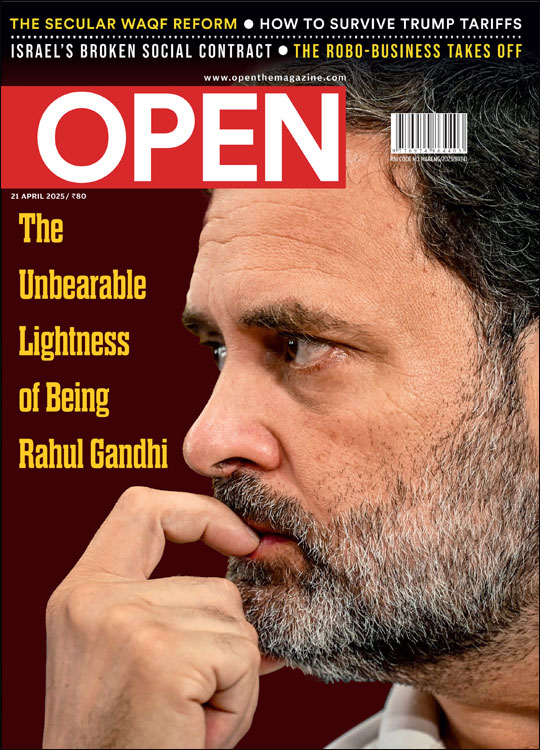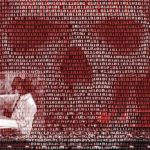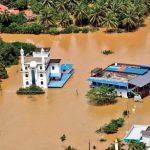Suddenly Indian
Turtuk was a border region in Pakistan until 1971. One fine day, it became a part of India. The unsettling effects of this switch are still visible
 Shubhangi Swarup
Shubhangi Swarup
 Shubhangi Swarup
|
17 Jan, 2014
Shubhangi Swarup
|
17 Jan, 2014
/wp-content/uploads/2015/11/turtuk.jpg)
Turtuk was a border region in Pakistan until 1971. One fine day, it became a part of India. The unsettling effects of this switch are still visible
On 14 December 1971, Sanaullah Khan was 13 years old when the Indian Army captured his village, Turtuk, from Pakistan. At the edge of Baltistan, enclosed by the Karakoram mountain range with the Shyok flowing in the valley below, Turtuk was one of four villages captured by Indian forces.
As a boy, Sanaullah was afraid of both, India as a country and the actual LoC that bordered some farms. The sight of the Indian Army patrolling the other side was frightening. Pakistani newspapers were filled with stories of Muslims being tortured and persecuted in India. History textbooks also vilified Indians. Couched within this fear was a child’s curiosity: what must Indians really be like?
Sanaullah remembers his father, Maulvi Abdullah Karmapa, a visionary Maulvi, playing a decisive role that morning as a village elder. Villagers from a closeby village Chalungka had fled overnight. But Sanaullah’s father urged the people of Turtuk to stay put. Though most discredited him as a man who’d had the audacity to send his daughter Rehma Begum to school (the first female to be so educated in Turtuk), he had a point. If they chose to run, they might have had to be on the run forever. Not only would a generation be lost to displacement, they would lose something they valued dearly: the idea of home. They would never find the same comfort anywhere else.
With the lucidity of hindsight, Sanaullah and his peers can now appreciate the Maulvi’s wisdom.“In the old times, people may have been illiterate, but they had a lot of knowledge,” says Sher Ali, Sanaullah’s brother-in-law. He remembers his grandfather returning from seasonal work in Simla and Mussoorie with news of the atom bomb, of Germans and of India’s freedom movement. The elders had lived through World War II, Independence, Partition, and now this, the grievous loss of Bangladesh. They had once considered India and Pakistan one nation, and were aware—in spite of State propaganda—that millions of Muslims still lived and thrived in India.
Then, early one winter morning, Major Chewang Rinchen of the Ladakh Scouts of the Indian Army came on a courtesy call to Turtuk. The hero of the conquest, the Major would be awarded another Mahavir Chakra for this, making him one of only six Indians with two such honours to date. ‘Major Chewang Rinchen had not only captured Point 18,402, the highest post ever captured, but also liberated an area of 800 sq km from PoK (the largest area captured in the 1971 operations),’ writes Claude Arpi, an academic, in his tribute to Rinchen on Rediff.com. The Major had captured Turtuk with ‘hardly any supplies and no artillery support’.
Sher Ali, then just 17, remembers the moment the Major knocked on his father’s door, requesting a cup of tea and indoor warmth. Before Partition had slit the landscape in 1947, Sher Ali’s father Ghulam Hussein would travel to Nubra valley in Ladakh for trade. He would go there to barter yak cheese, butter and apricots for essentials like tea, clothes and vessels. Hussein had also been to Major Rinchen’s home village and asked him if he knew Khunzang, an old friend of his who had two sons; Hussein wondered how they all were. Major Rinchen, it turned out, was one of those boys. That was the ice-breaker. Sher Ali would meet Major Rinchen on all his visits to Turtuk from then on.
Till the night before, India had been a feared enemy. All the villagers had been saddened by the news of East Pakistan’s breakaway. The next morning, the Indian Army was at their doorstep—with Major Rinchen as an emissary, here to welcome them to India. As Indian citizens, he told the villagers, they had nothing to be afraid of, not even the Army, which was there to protect them. The Army gifted the villagers tea and sugar.
The women of the village organised a cultural procession in return, giving the soldiers apricots and other gifts.
With the conquest of Chalungka, Turtuk, Thyakshi and Thang villages, a thin slice of Baltistan was now under Indian control. Overnight, the LoC had moved. It was a tactical victory, given the terrain, that offered Indian forces new vantage points, and the success would come to drown out the inevitable narratives of separation, heartbreak and hardship the villagers endured as a consequence.
Last September, I visited villages of the Turtuk region for a week as a volunteer for a local organisation, Avalotikeshwara Trust, and taught English at government schools. The village elders I met said that more than 300 people of the villages captured by India were left behind in Pakistan that day. These were people who were away from home for education, employment and trade. Children had been separated from parents, siblings from one another and farmers from their fields. Once the dust settled and these villagers realised that their return would be impossible (even on a temporary visa), couples caught on opposite sides were compelled to divorce.
Thyakshi and Thang, the villages closest to the current LoC, are still out of bounds for outsiders, while Turtuk was opened for tourism in 2010. No aspect of life here remains untouched by the turbulent narrative of nation building, not even State education.
Thyakshi’s high school is housed in a building that was constructed by Pakistan’s government and inaugurated by India’s. The senior teachers here were educated under the Pakistani education system. In Turtuk, Rehma Begum, principal of Yul Primary School, is one such teacher. The first woman to get an education here, she had only studied till Class IX when the Indian Army took over, halting her schooling. In 1977, the Indian Government offered her her first job—as a primary school teacher. Asked to compare the education systems, she speaks of how education was compulsory for all in Pakistan under a scheme called Apni Madad Aap, long before India instituted its Sarva Shiksha Abhiyan.
Though it was relatively easy for locals to accept employment as teachers, joining the Indian defence services or state police was difficult. “For 20 years, our Balti elders didn’t allow the young to join the Ladakh Scouts or the police,” says Haji Abdul Qadir, the nambardar (headman) of Thyakshi. “What if Pakistan took over once again?” The same men would be persecuted as enemies or banished as refugees.
Ali Hassan had retired as a naik of the Pakistani army when India took over Turtuk, denying him access to his pension. He complained to Lieutenant Major Arjun Ray, the force behind the Indian Army’s Sadbhavana project, and LK Advani on their visits to the region, demanding that they either take it up with the Pakistani government or pay him his pension. But nothing came of it. Instead, his only son, Habibullah, joined the Indian Army against his advice.
Abdul Qadir remembers how all the women folk arrived at Lieutenant Gen Arjun Ray’s doorstep one day in tears. “I was a councillor then, and he asked me why they were crying,” recounts Qadir. “They had come to tell him not to take Habibullah into the Army, but I lied. I said these were tears of joy, that they had come to thank him.”
During the Kargil War of 1999, Abdul Rahman, principal of the only school in Thang village, saw a Bofors shell land in the school compound. “We knew of the war in Kargil, but didn’t know firing had begun here too. I was sitting in class when shells began to hit our mountain. We ran immediately. Then another came down. For two months, our school was closed. Each day, we would retreat to our bunkers from 2 pm to 10 pm as the shelling took place.”
According to Rahman, the shelling didn’t stop for five years—until 2003, that is. War, they sadly note, is inescapable in this border region.
One evening, I was invited to give a talk on journalism to a crowd of more than 30 boys and young men at the Yul Youth library, a cattle pen which had been revamped as a study centre. No one was interested in journalism. Instead, they wanted me to share their opinions with the rest of the world.
Nazir Hussain, a teacher, had this to say: “Living on the border, we have sacrificed more than the army.” During the Kargil War, all of Turtuk’s villagers were evacuated to Hunder, where they spent three months in what the boys describe as an open jail, while able-bodied males were made to transport goods to the LoC “like mules”. Cattle, meanwhile, perished in the shelling by the hundred. Homes were destroyed too.
“The media cries for war at the smallest sign,” sighs Inayatullah Khan, a 19-year-old student of aerospace engineering, referring to recent Chinese incursions, “They think not for a moment about us people living on the border.” He summarises a fictional story he had written to illustrate his point. It is about two brothers from Turtuk separated by the events of 1971 as infants, each living in ignorance of the other’s existence across the LoC. As adults, both join their respective armies, and confront each other—without knowing it—as enemies at the Battle of Siachen. True to its dramatic premise, one kills the other. The moral of the story: “It doesn’t matter which side wins, the blood that is shed is ours.”
Thang is the last village before the LoC—for us Indians, the final frontier. “Very few people visit Thang. To come here is a matter of destiny,” says Abbas, our 23-year-old driver. The son of Thang’s nambardar, he is the only one who owns a car in Thang. And what makes Thang so special, I ask him. “Pakistan,” he replies.
One can see Pakistan from every corner in Thang. Below, the river Shyok takes a sinuous turn, separating Thang from the next village, Phranu, in Pakistan, on the other side of the bank. People in Thang can’t help but envy the 24-hour electricity that lights the other side up, compared to their own rationed hours. They can’t help feeling forsaken. “The Indian Government doesn’t want to invest in us because our future is uncertain,” a villager tells me. There is also a Pakistani post on the peak of the hill that Thang is on. “Pakistan sits on our head,” he jokes.
Lower in altitude than other villages, Thang is remarkably hot, smouldering under the sun’s glare. These are the Karakorams, barren and naked. The only school is a state primary school. One of its meagre possessions is a cracked globe.
Hidden in this village of infernal heat and forced oblivion is a fragile dream. Compared to the rest, the house of Thang’s nambardar stands out as a humble Taj Mahal, and he, a modern-day moghul. Built in the most verdant part of the village, the heat vanishes among the trees and creepers that shade his verandah. Nearby, artificial ponds have been built for fish, decorated with floral designs. Attached to the house is the idea of a menagerie. Turkeys, rabbits and hens occupy cages. Portions of the home have been decorated with patterned tiles, and father and son, we hear, painted the living room in bright colours themselves. Among objects like vases, artificial flowers, carpets, Islamic wall hangings and the mounted head of an ibex, are the following words painted at the entrance in English: ‘The life is blessing of the God’.
Pakistan was under martial law during the 1971 Indo-Pak war. It is how most elders here remember the country. “Corruption was very little in Zia ul-Haq’s time,” says Abdul Qadir. “I myself had blacklisted a few contractors for cheating. Unless a job was completed, a new one wouldn’t start.” This, he claims, is in sharp contrast with their experience of democracy, and he believes that India would go much further if it were under martial law. Qadir considers India more progressive than Pakistan by way of opportunities, amenities and ideals. “We understand what it means to be Indian more than Indians,” he tells me, describing the country as a vast ocean that makes it possible for all kinds to merge.
In October 2013, a miracle was said to have occurred in Turtuk when Mohammad Bashir, Sanaullah and Rehma Begum’s eldest brother, returned home from Pakistan after 43 years. It has been excruciatingly difficult for those left in Pakistan to get an Indian visa and visit Turtuk; the last time that happened was two decades ago. “A corpse has come back to life,” was how Rehma Begum described her brother’s return. Mohammed Bashir stayed in Turtuk for 35 days till his visa ran out. “Allah has been kind,” sums up Rehma Begum. But not everyone has had Bashir’s luck. Many refugees, unable to return home, died with broken hearts.
ON MY LAST morning in Turtuk, I visit Sher Ali’s home to say goodbye. He is amicable and approachable in his demeanour, eager to answer every question I have. He tells me about his cousin, an 80-year-old man who moved from Pakistan to Canada. “He yearns to return to his home here,” says Sher Ali, who hears from him on the phone at least a couple of times a week. “‘Is the rose tree in my farm still there? The crooked wall in my house, has it been fixed yet?’ [he asks]. He speaks to me for three to four hours about these things.” The man from Canada had made it till Leh a few years ago, but the administration did not allow him any closer.
Sher Ali takes me through an album of photographs, one that has been browsed so incessantly that pages have come off. Of lives most cherished, all that remains is a single page of photographs. He shows me photographs of his eldest brother who was left behind in Pakistan. He was helpless, he says, as he watched his brother age in the passport-size pictures he would keep posting. By the time telephone lines reached Turtuk six or seven years ago, 30 years had already passed. His brother’s voice wasn’t as youthful as Sher Ali remembered it. Given his job as a teacher in a Pakistani army institute, Sher Ali knew his brother would never be allowed to visit Turtuk. Their irrational hope of seeing each other again vanished with his death last year.
In 1971, Sher Ali’s brother had left a wife and daughter behind in Turtuk. After a divorce, Sher Ali remarried his brother’s wife and raised Ayesha, his niece, like his daughter. The next page in his album is dedicated to Ayesha. She was the first woman to become a doctor in Turtuk, he says with pride. But she had poor health, and died in her twenties of anaemia.
The people in these photographs, like the owner of this album, have known tragedy intimately. Yet, they have also known resilience. When Sher Ali had a daughter himself a decade later, he named her Ayesha in her memory.
She is also very intelligent, he tells me.
He hopes that she, too, will be a doctor one day.
About The Author
CURRENT ISSUE
The Unbearable Lightness of Being Rahul Gandhi
MOst Popular
3

/wp-content/uploads/2025/04/Cover-Congress.jpg)











More Columns
Maoist eco-system pitch for talks a false flag Siddharth Singh
AI powered deep fakes pose major cyber threat Rajeev Deshpande
Mario Vargas Llosa, the colossus of the Latin American novel Ullekh NP